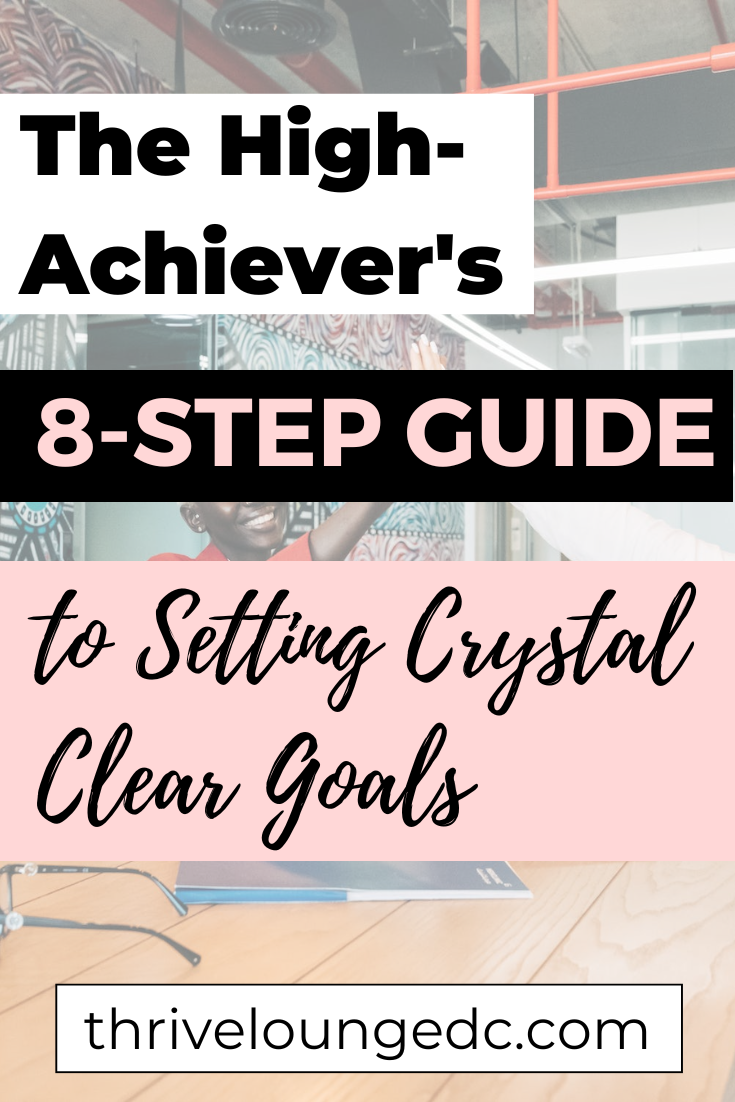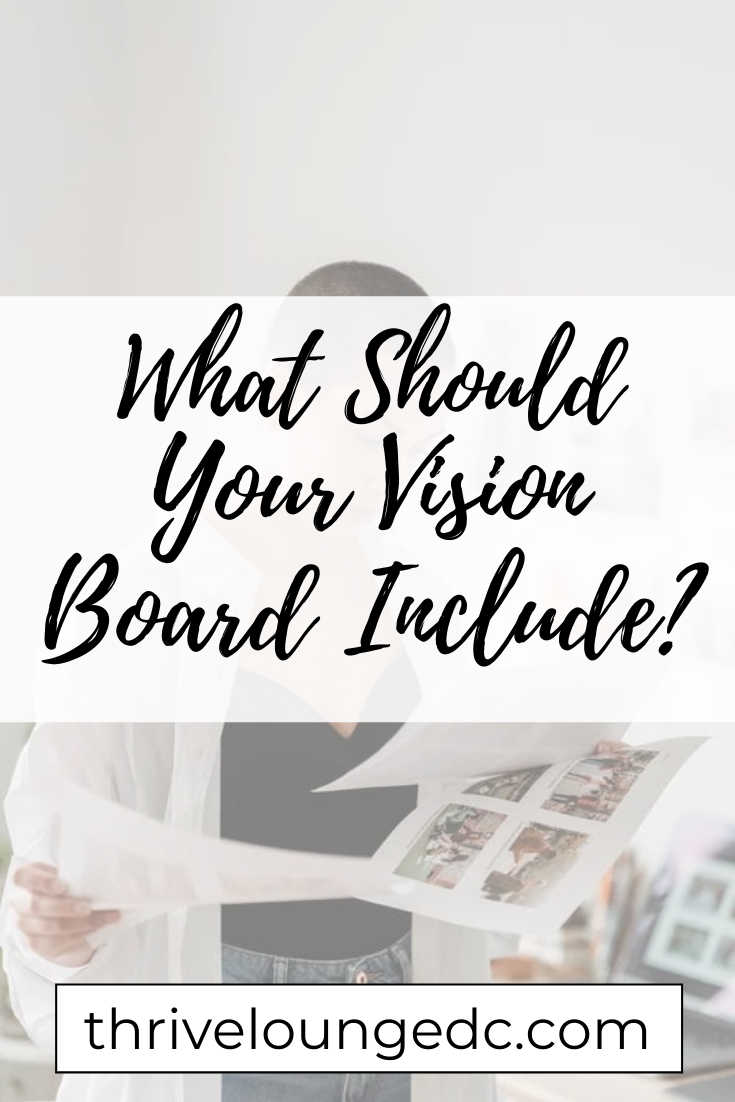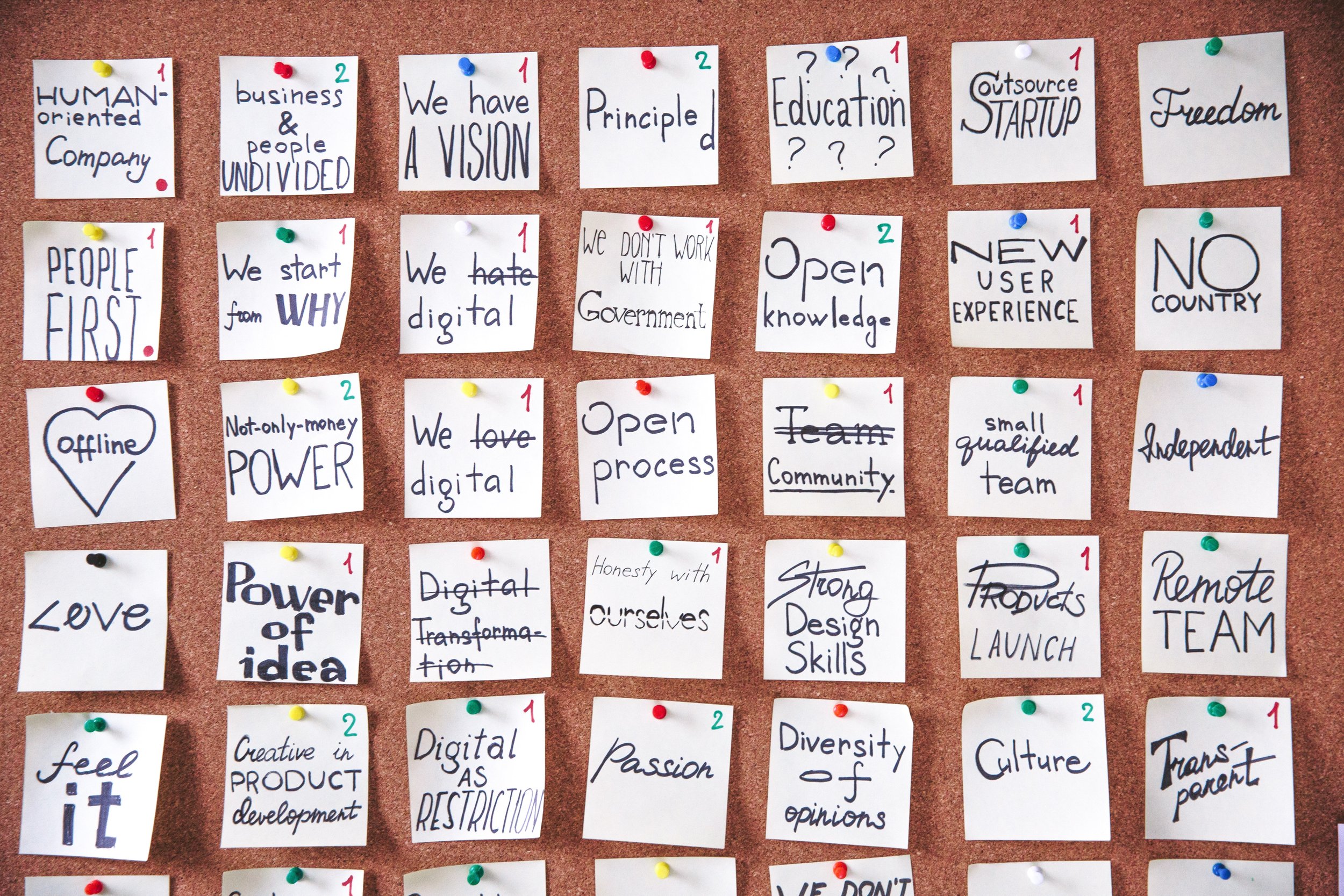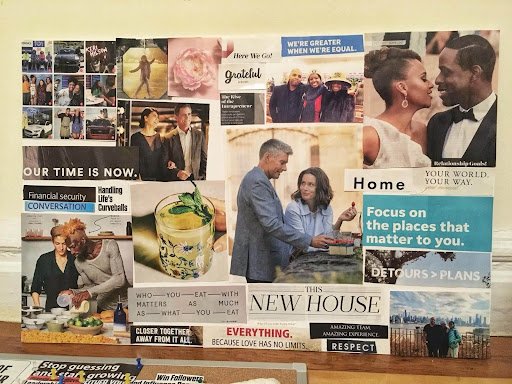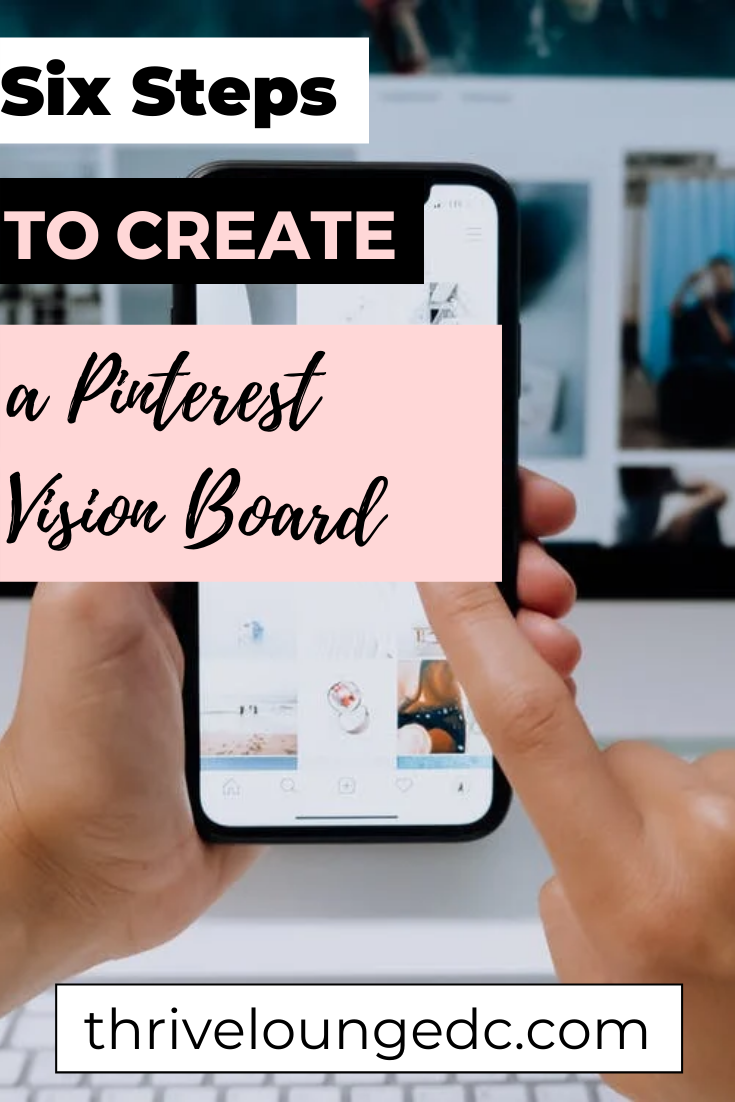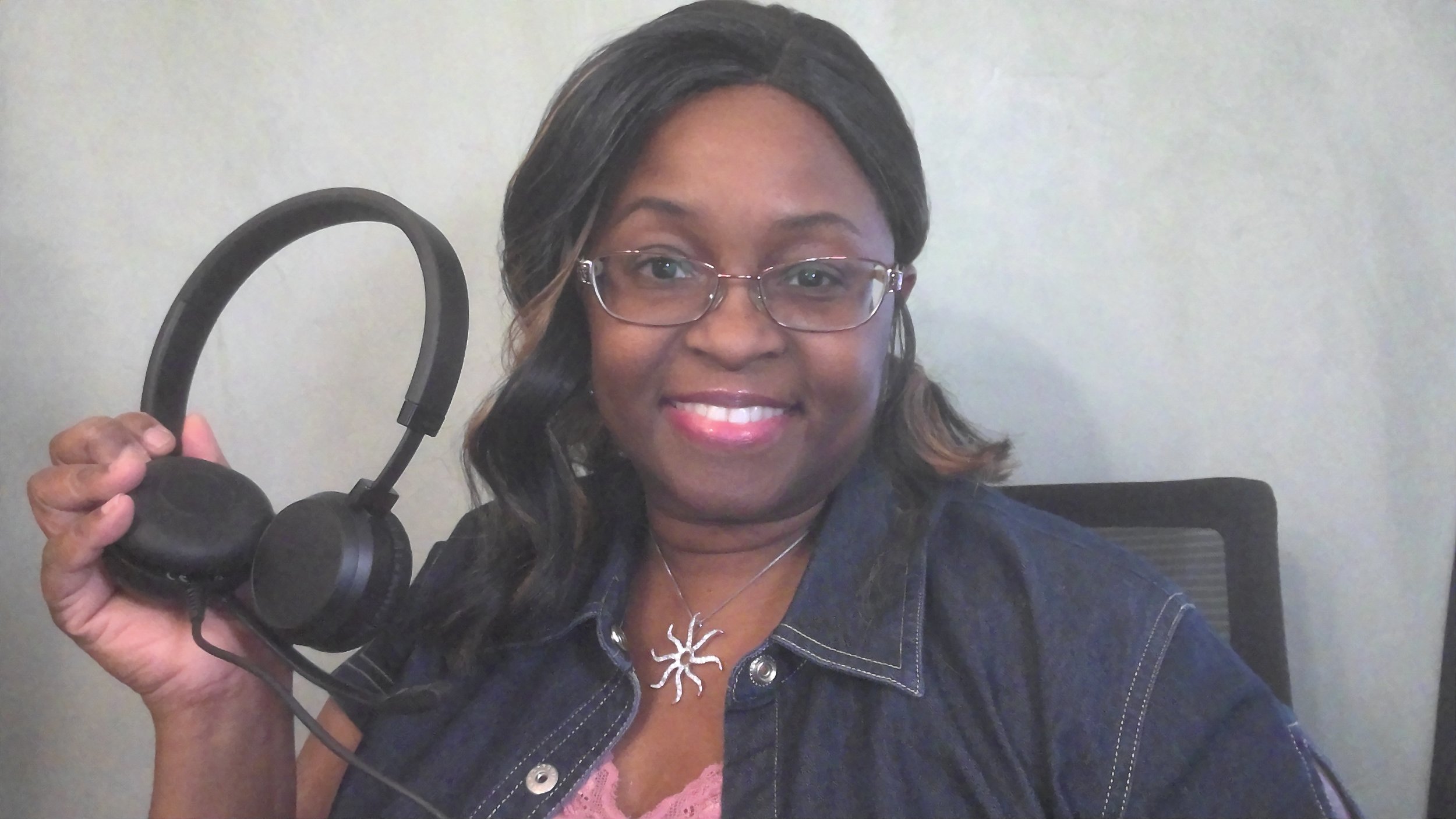Honestly, anytime I get together with my girlfriends is life-changing, but my absolute favorite is with a vision board party. In this post, I’m sharing how to host a Galentine’s Day Vision Board Party for your closest girlfriends.
The High-Achiever's 8-Step Guide to Setting Crystal Clear Goals
Did it happen to you yet? Did the panic-thought jump into your brain confronting you with reality… that you have not set not one dang goal for 2023?
I’m not here to judge. But I am here to nudge. (…see what I did there???? 😊 )
Let me encourage you to think deeply about what you’d like to do this year. It’s time to leave the pie in the sky goals behind and confidently walk forward into this new year with a crystal clear vision.
Grab a cup of your fav tea, or a glass of vino and find a comfortable sitting position. Use these eight tips to think through your largest goals.
Step 1: Know Your Why
Your goals become more powerful the second you attach a significant meaning to them. Your "why" is the reason you want to accomplish a goal.
Anyone can set a goal to lose weight, pay off debt or make more money, but what does that change mean for you in your life? If you can take a step back from the actual goal and think about how your life will be impacted by this action, you'll be able create more powerful goals.
For example:
Your Goal: I want to pay off my student loan debt.
Better Goal: I want to pay off my student loan debt because:
I will have more disposable income.
I can save more for retirement.
I can be a better role model for my child.
I can focus on investing and creating a better financial portfolio.
Having a goal is great, but understanding why you want to accomplish that goal is even better. If you can pinpoint a few good reasons or great side effects of accomplishing this goal, then these reasons will help you continue to commit to the goal when times get rough.
Step 2: Quantify it
Quantifying your goals means to attach a number to them. This means breaking down how much weight you want to lose, how much debt you have to pay off or how many times you want to get deep tissue massages. (Just me?)
For example:
Your Goal: I want to pay off my student loan debt.
Better Goal: I am going to pay off $32K in student loan debt.
The benefit of quantifying your goals is that you can clearly and easily articulate exactly how much you have to go on your goals.
Step 3: Add in a due date
Do you remember being in high school and the teacher tells you you have a paper due at the end of the month, but you'll wait until three days before it's due to start researching and writing it? Due dates add a sense of urgency. It can give you the kick in the pants that you need to get moving on the goal.
Your Goal: I am going to pay off $32K in student loan debt.
Better Goal: I am going to pay off 32K in student loan debt by December 31st.
Always set a concrete date for when you want that goal to be completed. Otherwise, you might be reaching towards the same goal every single year because you did not give yourself a definitive date to get it done. Your goal for the year becomes a "someday" goal.
Step 4: Add in the how
Your "how" is your action plan. Breaking your big goals into the simpler goals it'll take to accomplish the goal, you make the goal more tangible. You give yourself an opportunity to mentally break down what it will take to get there.
Your Goal: I am going to pay off $32K in student loan debt.
Better Goal: I am going to pay off $32K in student loan debt by December 31st by lowering my living expenses by 25%, sticking to a strict "fun money" budget and creating online products.
This step is one of my favorites because it forces you start talking in terms of action.
Step 5: Think about the frequency
Every week on Sunday, I head down to a coffee shop and get to work. I can sit there anywhere from 4-6 hours (like a legit 9-to-5) and that is the day that I'm most productive. When I first started doing this, I would pull myself out of bed, shower and have breakfast then (after a half hour of convincing myself that this was good for me) I'd head to the coffee shop. After weeks of doing this every Sunday, no matter where I am or how I feel that day, my body pulls me into a coffee shop to work.
Adding in the frequency that you will perform an action that helps you reach your goals (whether it's daily, weekly or monthly) will help you develop a habit over time.
For example:
Your Goal: I'm going to work out more.
Better Goal: I'm going to work out three days a week.
Best Goal: I'm going to work out on Mondays, Wednesdays and Fridays.
Getting super clear on when you will work on your goals - and sticking to it over time - will increase your ability to accomplish your goals because over time you'll develop habits.
Step 6: Make Your Goal Present On Your Schedule
Chris Hart once said
"Show me your calendar and I'll show you your priorities."
It basically means that we all make time for the things that we want to do and the things that we value in our lives. If you want to be a high achiever, you simply have to make your goal one of these priorities.
That starts with giving your goals a definitive time on your calendar.
For example:
Goal: I'm going to work out on Mondays, Wednesdays and Fridays.
Better Goal: I'm going to work out on Mondays, Wednesdays and Fridays after work.
When you have time slotted for your goal and nothing else can take that time, you become unstoppable.
Step 7: Speak as if it's already done
Your brain, while incredibly complex, is also pretty easy to trick. That's why we do vision boards annually and look at them daily - the more your brain sees something, the more it believes it's already done. The same thing goes for what you say.
Changing your goals from something you will do in the future to something you're currently doing tells your brain that you are committed to doing this NOW - it's not something you're putting off to a later date.
For example:
Your Goal: I'm going to work out on Mondays, Wednesdays and Fridays after work.
Better goal: I work out every Monday, Wednesday and Friday after work.
Step 8: Don’t give up
Life will sometimes throw us curve balls. Whatever happens, try not to ever give up on achieving the goals that are most important to you. It is always better to revise a goal to give yourself more time to finish it, rather than give up on the goal altogether.
Bonus: FOCUS on one goal at a time
My last piece of advice is to focus on one large goal at a time. If you're trying to do five things at once, you're putting 20% of your energy into 5 different things. While you might be incredibly busy, you may have nothing to show for it at the end of the day. Choose one goal that will make a huge difference in your life - and once that goal is completed - move on to the next one.
Happy Goal-Crushing!
xoxo
Want To Start Planning Your Vision Board Workshop?
Start with the Thrive Lounge Vision Board Party Starter Kit. Click Here to learn more!
ABOUT THE AUTHOR
Cyrene is a fun and accomplished workshop facilitator, learning and development guru and Human Resources professional. Being at the helm of Thrive Lounge has been a long-time dream. Through vision board workshops she plans to accomplish two-way learning. Sharing her vast years of knowledge to motivate and encourage others; while simultaneously getting the reward of great energy, ideas and questions to ponder back from each group. A super win-win. Please join our Thrive Lounge community so you too can benefit!
Discover more from Thrive Lounge
What should your vision board include? (Plus a simple vision board checklist)
When it comes to creating a vision board, you start with a blank canvas that you can use to create a vision of any goals you want to achieve in a given timeframe.
It may seem like having a blank canvas to create any image you’d like gives you a LOT of opportunity, but many people find that having too much creative freedom with no constraints stifles their creativity instead of enhancing it.
Your vision board should include the goals you want to set, images and quotes that represent those goals, words that resonate with who you want to become and an aesthetic that appeals to you. The major rule for creating a vision board is to set your intentions before finding your inspirational words and images because your vision board should be driven by what you want to create in the world, not enhanced or altered by influences from magazines or social media.
Many people wonder what should they put on their vision board. I asked my blog readers for their top tips for creating your vision board. In this article, I’m going to share what to do (and what not to do) when you’re creating inspiration for your goals.
Your intentions for the future.
A vision board is a visual representation of your goals, future accomplishments, pie-in-the-sky dreams and feelings you want to incorporate into your life moving forward. Vision boards are a great way to set your intentions for the year and have an inspirational companion through your journey on the way to accomplishing your goals.
You can create a vision board for your life, which will include goals for the different areas of your life you want to focus on. Alternatively, you can create goals specific to one area of your life. For example, I create a relationship vision board with my significant other every year.
I’ve also hosted vision board workshops for companies that want to help their employees and teams create a vision for their careers.
Start with defining whether the vision board you’re creating will represent your whole life or just one, focused area.
Aspirational accomplishments, feelings and purchases.
The goals you represent on your vision board should fall into three main categories: accomplishments, feelings and tangible items.
You can ask these questions to explore the goals you want to set.
What DO you want to accomplish?
These are the tangible goals that you have your heart set on accomplishing like completing your master’s program and receiving your degree, publishing your first book, launching your podcast, etc. There’s a clear metric on reaching this goal like a degree, award or book.
How DO you want to feel?
Imagine you’ve reached the end of the year (or whatever your goal horizon is) and you are proud of who you are and you’ve accomplished every goal you had your heart set on. How do you feel about yourself? In this case, you want to add feeling words. Maybe you feel powerful, satisfied, hopeful, joy or at peace.
What DO you want to own?
Maybe there’s something you want to purchase by the end of the year. Maybe you want a new car, home or dream vacation.
Once you’ve decided on the goals you want to set with your vision board, it’s time to move on.
A few SMART goals for important life areas
With nearly unlimited options on the goals you can set, it’s difficult to narrow down your options. Some goal suggestions:
Personal Finance: Creating a budget, saving more money, automating your investing or understanding your taxes.
Career: Finding a new job, asking for a raise, or switching careers.
Education: Learning a new skill, earning a new degree or taking a class to develop a hobby.
Fitness/Health: Taking walks, going to the gym, eating food that work well with your body, etc.
Adventure/Self-care: Taking a trip, starting a new hobby or
Spirituality: Attending church, learning about a new religion, etc.
Relationships: Better communication with loved ones, spending time with friends
It’s important to remember that these are important areas of your life that you CAN set goals in. You don’t have to set goals in all of these areas if you don’t feel compelled to. Honestly, it’s better if you choose 3-4 areas of your life to set larger goals in and work towards that goal over time.
Be Cautious - It’s easy to set lots of goals (like a ton). But when you set lots of goals you’re not doing the hard work of choosing what really matters. You have limited time, resources and energy to put towards any individual goal. And when you have too many, it’s easy to spread your resources too thin. This may lead to burnout, overwork and never really making it to the finish line for any of the goals we’ve set.
In your process of creating your vision board, set only the goals you want to happen in a short timeframe, usually a year. Focus on what’s most important to you right now and ignore the areas of your life where you feel you already have it all together or you don’t care to make improvements at this point in your life.
It’s ok to say you’re not interested in working on every single area of your life...if that will allow you to focus on what matters most.
Images, quotes and words of intention
So far, we’ve only talked about setting the goals and intentions, we have not yet begun adding anything to our blank canvas. I hope you have lots of big ideas and focused goals to represent visually on your board.
Gather magazines, personal photos, vision board photo books and word art books to begin cutting out images and words for your vision board. If you’re creating a digital vision board, you can simply use Google or other image sites to find images for your vision board.
Cut out all of the images that resonate with your goals on first glance. Don’t worry about choosing the best and perfect images right now. This stage is just for image gathering. You’ll have plenty of time to curate and design the clippings later on.
Inspirational and thoughtful design
This vision board will be your goal-focused companion as you work towards your different goals. Once you have a pile of images, it’s important to organize your images and words to match an aesthetic that draws you in, engages you and inspires you.
I like to group images associated with the same goal.
For example, imagine I’m creating a vision board with the goal to sing more, save money and spend time with family. On the vision board, I will group the photos that represent the singing goals together on the board on the left, the saving money goals on the right of the board and the family goals in the middle.
There is no wrong way to structure your vision board. Some people like to group similar colors or only cut out images that are colors they like. Many people want to cut out images of people who look like them.
A Simple Vision Board Checklist
The vision board checklist below will help you stay on track with all the goals you want to set in the vision board you want to create. While I’ve included all life areas here in the checklist, remember that you should only set goals in the areas that matter to you.
Once you’ve found your images that represent each of the items on the list below and placed them on your board (or determined you do not want to add that item), check it off the list!
Goals for Life Areas
Feelings, Tangibles and Affirmations
In closing, keep your vision board where you can see it. Add to it, take items away, rearrange images and most importantly….keep making time to achieve your important goals!
Want To Start Planning Your Vision Board Party or Workshop?
Join other Thrive Loungers by getting your own copy of the vision board party STARTER KIT here.
ABOUT THE AUTHOR
Cyrene is a fun and accomplished workshop facilitator, learning and development guru and Human Resources professional. Being at the helm of Thrive Lounge has been a long-time dream. Through vision board workshops she plans to accomplish two-way learning. Sharing her vast years of knowledge to motivate and encourage others; while simultaneously getting the reward of great energy, ideas and questions to ponder back from each group. A super win-win. Please join our Thrive Lounge community so you too can benefit!
Six steps to create a Pinterest Vision Board in just 30 minutes
I love to create a physical vision board using cork boards, magazines and push pins every year to keep on my wall as a daily reminder of my goals, but I’ve noticed a new trend in creating digital vision boards.
Genuinely interested in how many people were doing this, I polled my audience to see how many people are really creating a vision board digitally. It turns out that nearly half of their vision boards were created digitally.
You can create a vision board using Pinterest by adding all of your goals to a single board. Pinterest is an idea curation social media platform that allows you to search through images, videos and articles saved to the platform as "pins". 5% of the digital vision boards created by poll responders were made using Pinterest.
In this article, I’m going to walk through how you can create your own vision board on Pinterest. It’s a very simple process and there are many ways to create a vision board that you love to manifest your dreams.
What’s a Vision Board?
A vision board, also called a manifestation board or dream board is a visual representation of the goals you want to achieve within a given time period. You can create a general vision board that’s created to encompass many goals, like the one I’ve created below, or you can create one that’s focused on a single goal.
Here’s the Pinterest vision board I created for my 2022 goals:
Determine what goals you want to set.
The first step to any vision board, whether you’re creating a physical or digital vision board is to decide on what goals you want to set. You can set goals in the following areas:
Relationships
Finances
Career
Education
Health and Fitness
Self-care/Adventure
Spirituality
Of course, you can choose what life areas to focus on and what matters to you inside of each life area. For example, many people will set some kind of financial goals this year.
But you get to decide what kind of financial goal matters to you. You can pay off debt, develop a budget, start investing, get a promotion, start a side hustle or lower your monthly expenses.
The goal can vary widely within each life area so be specific about the goal you want to set.
Create a new Pinterest board for your goals.
From your profile, click the “+” sign on the right side of the screen,
Click “Board” to create a new board.
Type in the name of your board and check the button that says “Keep this board secret”
Click the “Create” button.
Here’s a video showing how to create your new Pinterest Vision Board:
I like to create a secret vision board because I want to be able to create without worrying about who else will see my vision board in the future.
Type your goals into the Pinterest Search Bar.
Now that you have your goals, type each goal into the search bar one at a time. Your search should be specific. For example, if you want to become more flexible and consistent in your yoga practice this year, type “yoga” instead of “fitness goal.” Typing a general goal will take more time to find images, articles and quotes to support your specific goals.
For each goal you type into the search bar, Pinterest will show you images and video pins that match your search criteria.
Once you’ve found the general images that you like, you can get different types of images by typing your goals + “quotes” into the Pinterest search bar. This will return quotes matching your goals.
If you’re still looking for more images, you can get more images specific to you by adding in your gender, ethnicity, age group or any other demographic features that are meaningful to you.
Save Pins that best match your goals to your vision board Pinterest Board.
There are two ways to add images to your vision board. You can either add Pinterest pins that you find during the search or you can find images outside of Pinterest and save them to your Pinterest board.
Adding images from Pinterest images directly from Pinterest is the easiest since they’re already available for you inside the app, but if you come across images in a broader search or on social media, you can definitely add those to your board as well.
Remember to only choose images that are aesthetically pleasing to you. Your board has to be tailored to your goals, your personality and beautiful in your eyes.
Repeat these steps until you have Pins for each of your goals saved to your vision board.
Type each goal that you have into the search bar and save pins for each of your goals. Once you have enough pins for each goal, your vision board is complete.
For a simple vision board, you can now take a screenshot of your entire vision board Pinterest board to print out, save to your desktop or use as a phone image.
If you’re more technically savvy, here are a few options to get fancy with your vision board design.
Design Option #1: Print the images individually to add to a physical board.
One of the questions I asked in the poll was "What’s the biggest challenge in creating your digital vision board?” The most common answer was that people mostly forgot about them after creating.
A great way to take your digital vision board into the offline world is to actually print each individual image and paste (or pin) them onto a physical canvas to create a tangible vision board. This way, you are just using Pinterest as an idea generator and using the images to create a physical vision board.
Design Option #2: Organize your images using Canva to print, use as your computer and phone wallpaper.
Another great way to make sure this doesn’t happen to you is to create a collage of the images using Canva, PowerPoint or Google Slides and save that image to your phone wall paper or your computer desktop.
You can even print it out as a pdf and frame it so you can look at it daily without technology.
Design Option #3: Develop your digital vision board on an ongoing basis inside the Pinterest App.
If you download the Pinterest app to your phone, you can continue to add to your Pinterest vision board over time.
I have found success with keeping a digital vision board inside of Pinterest only when I was working on a short term goal that I needed constant ideas for.
A good example of this was wedding planning. I had an ongoing vision board for my wedding dress and hair. Pinterest was the primary place that I went to collect ideas and I loved being able to continue adding to the board when I found new dresses and hairstyles I liked.
Here’s a video of how you can create your vision board directly in Pinterest.
Want To Start Planning Your Vision Board Party?
Let our vision board party Starter Kit get you organized. Click here for more information.
ABOUT THE AUTHOR
Cyrene is a fun and accomplished workshop facilitator, learning and development guru and Human Resources professional. Being at the helm of Thrive Lounge has been a long-time dream. Through vision board workshops she plans to accomplish two-way learning. Sharing her vast years of knowledge to motivate and encourage others; while simultaneously getting the reward of great energy, ideas and questions to ponder back from each group. A super win-win.
Please join our Thrive Lounge community so you too can benefit!

![Where To Buy Magazines For Your Vision Board Party [updated 2023]](https://images.squarespace-cdn.com/content/v1/57d0d23e579fb3d89aa6c53e/1530138639042-H0LBZSZTR3JYBWKCYKLN/StockSnap_5FGEKJTGDV.jpg)





